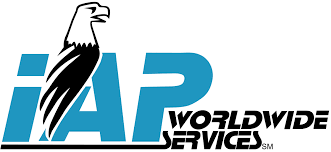IAP Worldwide FCPA Settlement: The Power of “Voluntary” Disclosure
 Okay, everyone take out their tea leaves and let’s get started on the IAP corruption case – DOJ announced a Non-Prosecution Agreement with IAP Worldwide Services and the criminal plea of a former executive who funneled bribes through a third-party to a Kuwait government official.
Okay, everyone take out their tea leaves and let’s get started on the IAP corruption case – DOJ announced a Non-Prosecution Agreement with IAP Worldwide Services and the criminal plea of a former executive who funneled bribes through a third-party to a Kuwait government official.
When you read the facts, the case is like many other FCPA fact patterns. Illegal bribes were paid to a Kuwait government official through inflated and unjustified invoices from a third-party consultant, who in turn, transmitted the bribes to the Kuwait government official.
The IAP executive at the center of the scheme started from the beginning by establishing a shell company to bid on two phases of a Kuwait security contract: Phase I involved establishment of requirements and planning for evaluation of Phase II bids. The same company could not be selected for both Phase I and Phase II of the project.
While it is easy to understand how the bribery scheme could have avoided internal detection within IAP, it is harder to accept that the creation of a shell company and participation in the Phase I bid would escape internal controls at IAP. Someone had to be asleep at the switch to ignore this obvious inappropriate scheme.
In the end, IAP won Phase I through its shell company, and paid bribes through the shell company and the Kuwaiti consultant to the Kuwaiti government official. Over a two-year period, IAP paid approximately 1.7 million in bribes to assist in Phase I and to obtain the Phase II contract.
The Non-Prosecution Agreement required IAP to pay a fine of $7.1 million. Interestingly, DOJ agreed to let IAP pay the fine over a four-year period. DOJ cited the fact that IAP “cooperated” and conducted and conducted an “extensive internal investigation.” In addition, DOJ cited the fact that IAP engaged in remediation, including disciplining or terminating officers and employees responsible for the bribery scheme, enhancing its due diligence protocol for third-party agents and consultants, and implementing heightened review of proposals and bids for contracts. IAP also instituted compliance program enhancements consistent with minimum requirements.
James Rama, the executive at the center of the bribery scheme, entered a guilty plea in the Eastern District of Virginia to a single count of conspiracy to violate the FCPA.
The IAP case probably resulted from a voluntary disclosure by IAP to the Department of Justice. IAP’s cooperation and “extensive internal investigation” produced a criminal case and guilty plea of a former IAP senior executive.
 IAP’s resolution will certainly be cited by DOJ and others as an example of the benefits given to those companies that choose to voluntary disclosure of an FCPA violation. It is not know how IAP discovered the matter or what led IAP to disclose the matter to DOJ.
IAP’s resolution will certainly be cited by DOJ and others as an example of the benefits given to those companies that choose to voluntary disclosure of an FCPA violation. It is not know how IAP discovered the matter or what led IAP to disclose the matter to DOJ.
As a government contractor, IAP falls under a mandatory disclosure requirement under the FAR Subpart 310 requiring companies to disclose violation of federal criminal law involving fraud, conflict of interest, bribery, or gratuity violations found in Title 18 of the U.S. Code. IAP’s FCPA violation certainly falls within the ambit of a “bribery” violation. Therefore, IAP’s failure to disclose such conduct could have resulted in suspension or debarment from federal contracting. IAP had no choice but to disclose the violation and cooperate with the government in the investigation and prosecution of others involved in the bribery scheme.
















1 Response
[…] on the PetroTiger case. Tom Fox dives into the supply chain to find bribery sources. Mike Volkov analyzes the IAP case. The FCPA Blog lists best risk assessment practices and goes on a risk […]